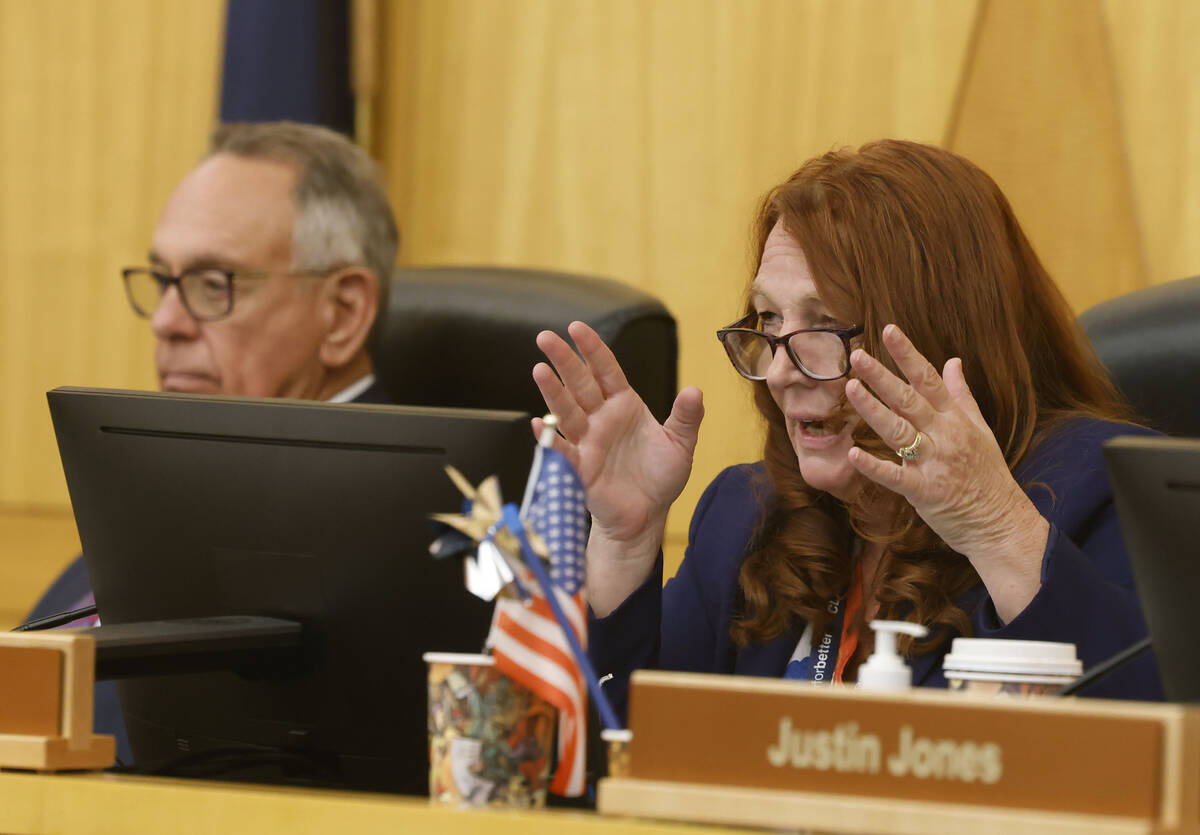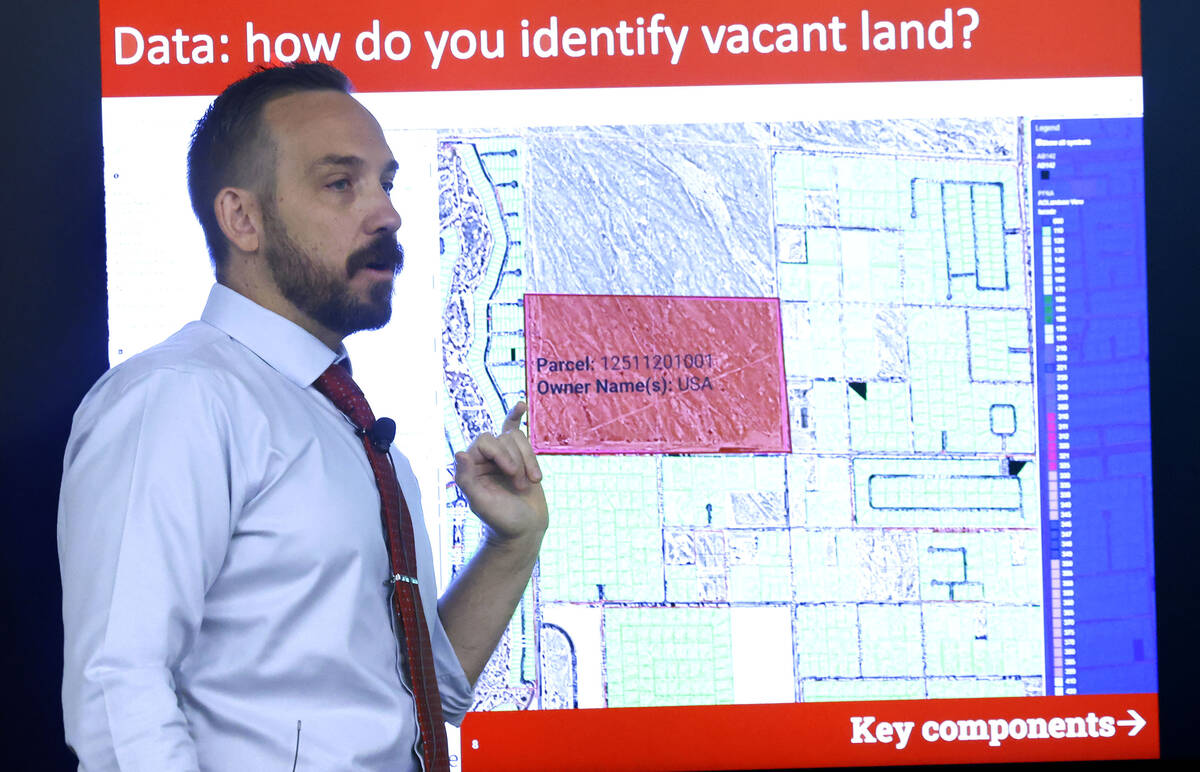Las Vegas shouldn’t worry about sprawl, county commissioner says
The Las Vegas Valley should not worry about sprawl when it looks to solve its housing crisis, Clark County Commissioner Jim Gibson said.
Gibson make the remark during Tuesday’s Clark County Commission meeting as UNLV Lied Center for Real Estate director Shawn McCoy — who was speaking as a private consultant — made a presentation on who controls the remaining developable land in the valley. McCoy said 88 percent of Clark County’s land is controlled by the federal government.
In releasing that federal land to the county or a municipality, Gibson said he is not worried about sprawl — the outward expansion of low-density development on the fringes of the urban core — becoming an issue.
“There are lots of misunderstandings out there,” said Gibson in addressing members of the public who expressed concerns over sprawl and how the valley can handle more growth given its issues with water and transportation. “Sprawl is something that has been studied in this valley many times over the years, it’s not what we face and it’s not who we are. The availability of land is something that is suppressing economic opportunity in the valley, it’s driving housing costs to a place where we can’t tolerate them anymore.”
McCoy’s presentation outlined how a lack of residential and commercial development has driven an affordability crisis in the valley. Politicians and housing experts across Southern Nevada are divided on the issue of sprawl as a way to add more housing to the valley’s stock and drive down prices. Concerns largely center around a lack of water and transportation as issues that could be exacerbated if Southern Nevada’s population continues to grow.
Freeing up land
McCoy estimates Clark County has approximately 90,052 acres of land under 12 percent slope and within 5 miles of a road that could be potentially developed for commercial or residential projects. That includes land controlled by the Bureau of Land Management and municipalities.
However, zoning and regulatory issues remain at the county level, said Commissioner Justin Jones, who represents District F. He said the county’s extensive Title 30 initiative — which came into effect in January 2024 — looked to unify development codes across the county to streamline such things as zoning and regulations is not meeting expectations when it comes to filing out vacant land within the valley.
“In terms of infill opportunities and challenges, this is another one that we talk about, it’s part of our Title 30 rewrite, we put some things in there that would in theory incentivize development, and in practice they haven’t. That’s just the reality of that.”
McCoy also pointed out that a single person right now needs to make nearly $120,000 a year annually to be able to afford a mortgage and that only 6.1 of the jobs offered in Southern Nevada meet that threshold.
Getting the full picture of Las Vegas’ housing crisis
Commissioner Marilyn Kirkpatrick, who represents District B and lives in Las Vegas, said McCoy’s presentation did not adequately address other factors related to Las Vegas’ housing crisis and that real estate stakeholders have told her most residential projects don’t pencil in right now because of interest rates.
“I was told that they can’t build more multifamily development because it’s too expensive to borrow money, and affordable housing has also told us that. I can’t fix that, that’s not anything I can do,” she said. “And I can tell you a lot of multifamily is owned by hedge funds today and I’ve brought it up more than once that people are living in an apartment paying property tax.”
Kirkpatrick also said McCoy’s presentation did not factor in the 2008 Great Financial Crisis and how it impacted the valley’s housing market, from a spike in inventory, an increase in foreclosures and dramatic drop in building both residential and multifamily projects.
McCoy’s presentation did address the amount of land developed each year in the valley dating back to 1995, which shows a massive drop off around 2006 that has yet to return to pre-recession norms. His presentation also outlined single-family versus multifamily construction dating back to 1995, which also showed a massive drop off in building around 2006 that has yet to return to pre-recession norms.
McCoy said more research needs to take place for Southern Nevada to better understand its land and development situation and its impacts on real estate and the overall economy. He said prior to 2018 there isn’t a lot of studies that have been done regarding land in the valley.
“I’ve been working as an academic for more than 15 years and I’ve never seen a more understudied research space than land,” he said.
Contact Patrick Blennerhassett at pblennerhassett@reviewjournal.com.






















